From Sea to Sahara: Discovering Tunisia's Interior
Where coastal mornings lead to desert temples, and ancient holy cities reveal their plot twists
The Hilton Monastir welcomed us late the previous night with all the ceremony of a small border crossing—security gates, bag checks, and a metal detector more zealous than some airports I've encountered. After hours wandering Dougga's ruins, this beachside resort's elaborate security ritual felt almost comically incongruous. But exhaustion has a way of making even the strictest protocols feel like mere suggestions between you and a bed.
Our oceanside suite upgrade should have been perfect—and eventually would be—but first came the Great Room Shuffle of 2025. My uncle and aunt's adjoining room greeted them with an aroma that definitely wasn't part of the five-star experience, leading to a late-night journey back to reception. The staff's gracious handling of our predicament (and subsequent room change) reminded me that true hospitality often reveals itself in problem-solving rather than perfection.
Morning brought redemption in the form of endless Mediterranean blue stretching beyond our balconies. In the grand breakfast hall on the ground floor, we discovered what would become our daily rituals. That humble Nescafe machine produced what might have been the best coffee I'd encountered in Tunisia—a mystery I'm still trying to solve. The made-to-order egg station hummed with activity, while we discovered an array of unknown cheeses that became a morning adventure in themselves. But it was the fresh lemon juice that emerged as our group's unexpected favorite, a bright note that would become our daily ritual.
With breakfast fueling our spirits and the promise of ancient ruins ahead, we set out for Sbeitla, where Rome's furthest reaches would reveal themselves in the desert light...
Sbeitla: Where Roman Grandeur Meets Desert Horizons
The three-and-a-half hour drive from coastal Monastir to Sbeitla traced Tunisia's gradual transformation from Mediterranean paradise to Saharan edge. Each kilometer pulled us deeper into the country's ancient interior, where the landscape shifted from seaside palms to increasingly arid plains. What began as occasional clusters of olive trees soon became an endless silver-green sea stretching to the horizon. These weren't the decorative olive trees you'd find in a California garden—these were ancient sentinels, their gnarled trunks and twisted branches telling stories of centuries under the African sun. The sheer scale was mesmerizing: thousands of acres of these trees planted in perfect geometric rows that created hypnotic patterns as we passed, their leaves shimmering like metallic lace against the reddening earth.
Our lunch break at a small restaurant on the outskirts brought another encounter with Tunisia's ubiquitous makloub sandwiches. As my family's enthusiasm for these daily companions visibly waned, the local cats saw their opportunity. They had clearly identified me as the weak link in our group's resistance to their charms, and soon enjoyed their own impromptu feast. These feline opportunists were dining better than we were, sampling a wider variety of our lunch than we'd seen in days.
Fresh from our adventure in Dougga just the day prior, where my legs had logged a heroic 30,000 steps up and down pastoral hills, I'll admit my enthusiasm for another round of ruins initially wavered. But Sbeitla revealed itself as something entirely different. If Dougga was a Roman city embraced by nature, Sbeitla emerged as its desert counterpart—a vast archaeological complex sprawling across ochre plains that seemed to absorb the sun itself.

The site's uniform reddish color created an almost otherworldly atmosphere, as if Mars had decided to host a Roman-themed costume party and forgot to invite the greenery. Unlike Dougga's verdant setting, where sheep grazed between temples, Sbeitla's temples rose from the flat expanse in perfect isolation, their columns creating sharp shadows against the desert light. The Capitol, with its three temples dedicated to Jupiter, Juno, and Minerva, stood in remarkable preservation, its proportions more elegant and possibly more impressive than its northern cousin in Dougga.


Our growing fascination with Roman mosaics deepened at Sbeitla. While Carthage's Roman Villa had offered glimpses of this ancient art form, here entire floors remained remarkably intact. We lost track of time examining the preserved tiles of a bathtub in what was once a Roman Catholic church's private quarters. The detail was incredible—whoever commissioned this clearly wanted to impress their visitors, though I doubt they imagined tourists would still be admiring their bathroom decor centuries later.

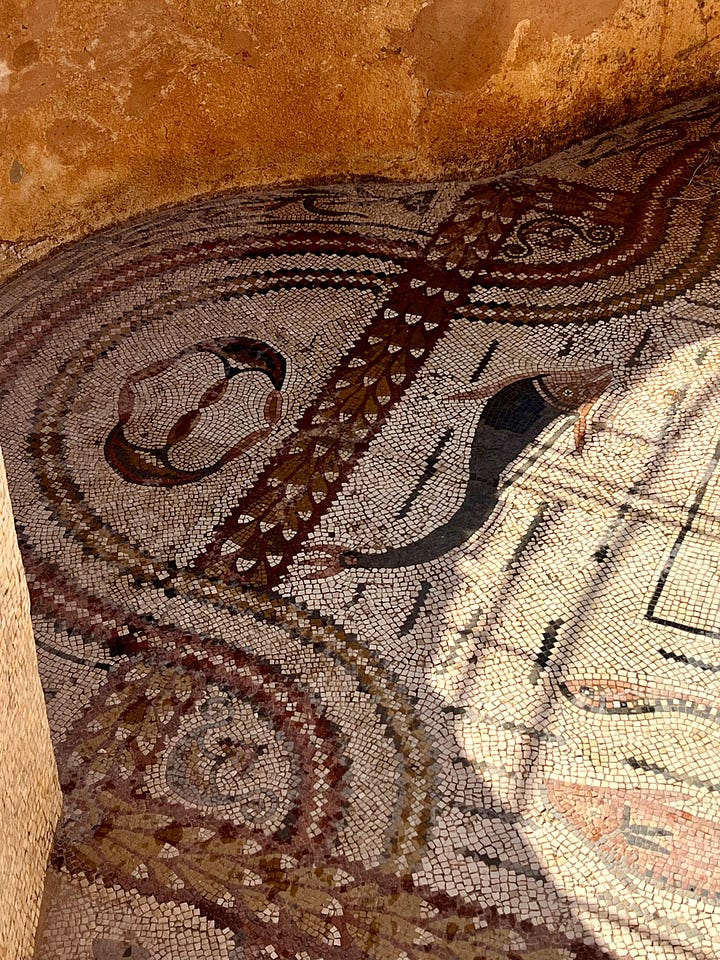
The vast public baths on the other side of the ruin stretched beyond, their scale humbling against the mountain backdrop afar. The public baths sprawled beyond, with fragments of loose mosaic stones scattered everywhere like breadcrumbs. It felt strange walking among them, knowing each piece once formed part of someone's daily routine. The mountains in the distance framed the scene perfectly, making it easy to understand why the Romans chose this spot. Despite the midday heat and my still-protesting legs, Sbeitla had worked its magic. This wasn't just another pile of old stones—it was a place that made you stop and wonder about all the lives that had passed through here before us.
Kairouan: North Africa’s Holiest City With a Modern Twist
The grand walls of Kairouan's medina rose before us as evening approached. Kairouan was Islam's fourth-holiest city after Mecca, the city of Medina in Saudi Arabia, and Jerusalem—a spiritual capital that had shaped North African Islam since the 7th century. But where I'd anticipated a city frozen in religious history, reality handed us a distinctly 21st-century remix. As soon as we stepped into the its grand gates, we had to start dodging scooters zooming past us with exhaust fumes making me nostalgic for Seattle's pristine winter air. Where spice vendors should be, a shiny phone accessory store stood with modern music playing loudly. "I want to see a medina that isn't a tourist trap like Tunis," I'd declared that morning. Well, be careful what you wish for—Kairouan's medina, less interested in tourists as it was about getting on with its modern, daily life, was about as far from a tourist trap as you could get (unless you were in the market for a new phone case).
Deep in the medina's winding alleyways, just as I was ready to admit defeat in my quest for ancient atmosphere, a massive mural stopped us in our tracks. Young Tunisia was having a conversation with its heritage right there on the wall—flowering jasmine, traditional doorways, and local life reimagined in bold strokes. That single wall felt like stumbling upon a secret manifesto, where the city's next generation was rewriting their story on their own terms.

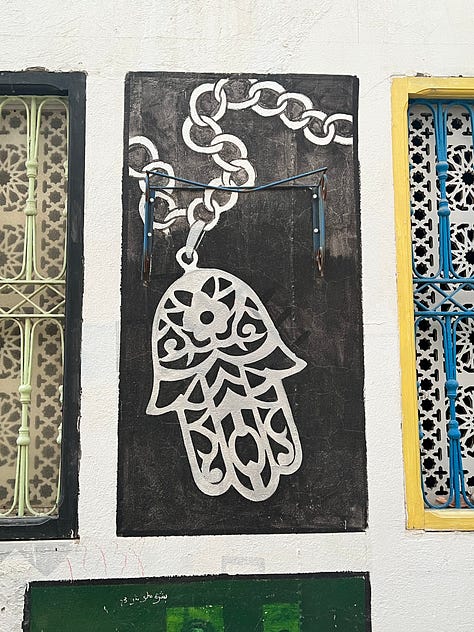
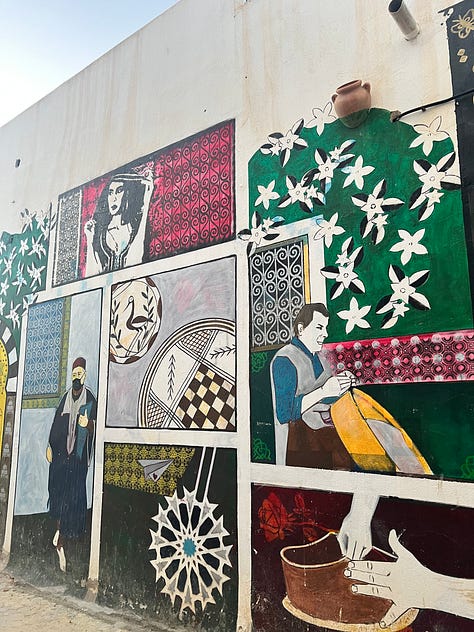
Seeking one last thread of historical Kairouan, I dragged our increasingly skeptical group to the governor's manor just steps away from the mural. Behind its imposing doors, now leading to a carpet shop, the building stubbornly held onto its past. Our “invitation” to explore came via the carpet merchant-with-agenda (who attacked his impromptu tour duties with the enthusiasm of someone who'd just discovered their true calling). He practically pulled us through the dar’s maze, with endless rooms where a governor once resided. Despite its commercial present, the building retained its aristocratic bones—every archway, ceiling pattern, and decorative feature still intact and telling stories of yesteryear’s grandeur. Standing in what was once the governor's reception room, now surrounded by stacked carpets, I could almost hear the echoes of political meetings, family whispers, and servants slipping through hidden corridors.
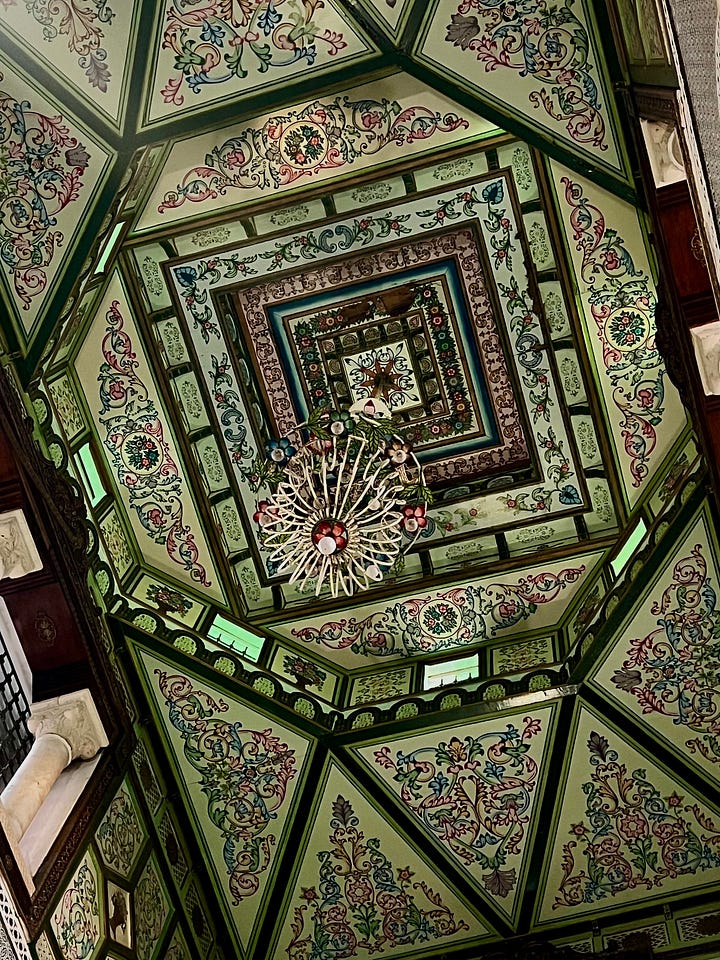
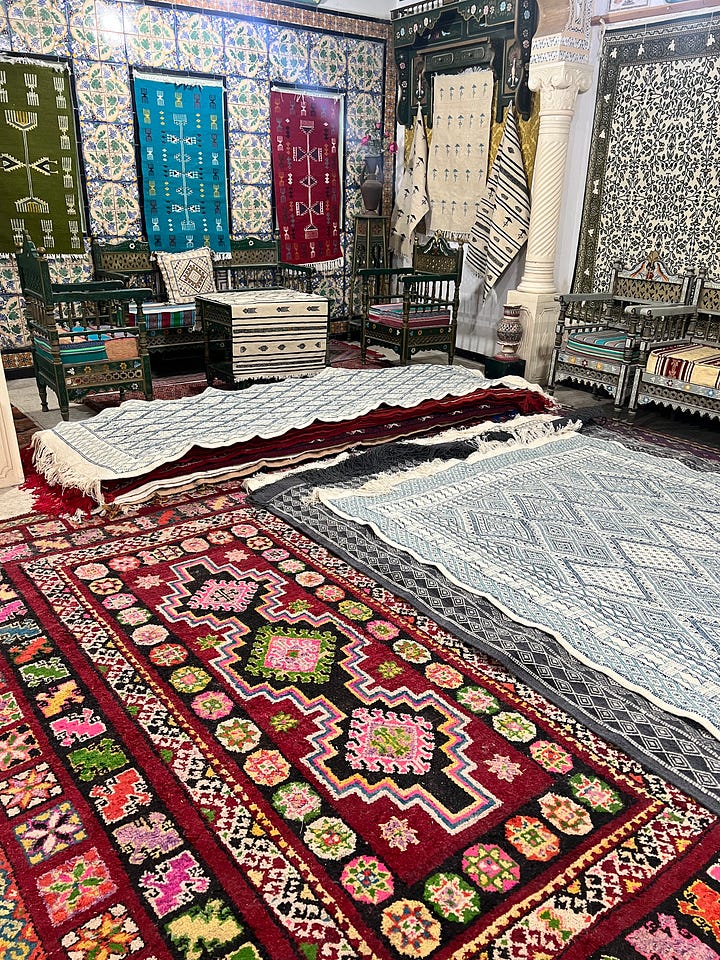
Narrowly escaping the carpet merchants—who had somehow multiplied while I was distracted by the ceilings and now formed a determined duo chasing after us—we headed to our last stop in the medina: The Grand Mosque. As night settled, the medina transformed around us. The streets that had felt jarringly modern in daylight took on a different character in the growing dark. Cats emerged as the alleyways' true rulers, materializing around corners like furry gatekeepers of the old city. With shops pulling down their metal shutters in echoing clangs, the crowds thinned until we were nearly alone. Against limestone walls, the streetlights painted long shadows, and suddenly I was walking through my own version of Casablanca. The empty alleyways, the play of light and shadow, the quiet North African night—all that was missing was Ingrid Bergman's dramatic entrance to Rick's Café. I half expected to turn a corner and find Humphrey Bogart waiting for me with a world-weary look and a perfectly crafted one-liner. In this version of the story, though, I'd probably be the one needing a stiff drink after a day of dodging ragged scooters and relentless carpet merchants.
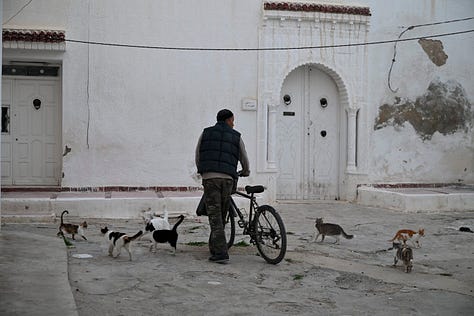
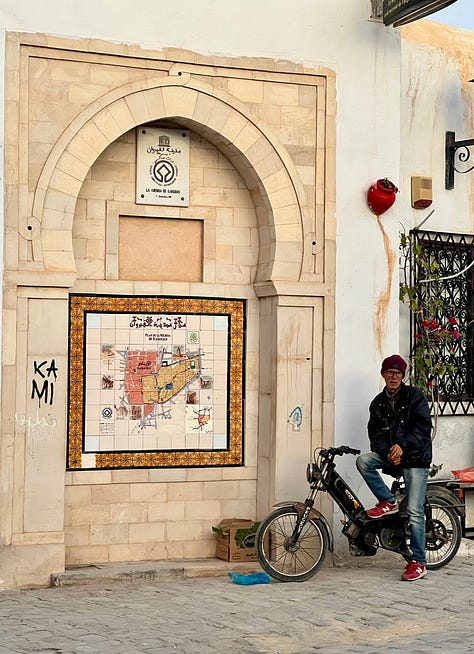




The Great Mosque of Kairouan loomed at the end of our winding path, its presence impossible to ignore. This wasn't just any mosque—this was the building that had been setting architectural trends since 670 CE, its influence spreading from Andalusia to India. Prayer time kept us from entering (looking back at the end of my trip, I was somehow turned away from every mosque by the convenient timing of "prayer time"), but its massive walls against the darkening sky told their own story. Local youth gathered outside, their easy laughter mixing with the evening call to prayer, creating a scene more authentic than any guidebook could have prescribed.
As night settled over the medina, I led our hungry group toward what I promised would be the day's redemption—though privately, I wasn't entirely sure if my quest for leblebi would end in another closed shop. After days of makloubs and couscous testing our culinary patience, I was ready for something different. We found a hole-in-the-wall spot, its white-tiled walls gleaming under fluorescent lights, shutters flung open to the street where locals perched on vinyl-wrapped chairs at modest wooden tables.
Leblebi had topped my meticulously researched list of must-try Tunisian street foods, and I wasn't about to let another opportunity slip away. I ordered three small bowls with soft-boiled eggs, my Arabic flowing more naturally now after days of practice. The gruff man behind the single giant steaming pot—which shared counter space with the cash register—treated my order with the same matter-of-fact efficiency he showed every local customer, a small victory that pleased me more than it probably should have. Though I'd read about the tradition of customers ripping their own bread into the bowl before service, here the kitchen handled that duty themselves. The steaming broth arrived cradling tender chickpeas, while a perfectly soft-boiled egg melted into the soup, its yolk enriching every spoonful. Harissa added just enough heat to warm us from within, while olive oil created dancing pools of gold on the surface. Crusty bread bits layered at the bottom of the bowl served double duty—perfect for soaking up the rich broth and cooling down between spicy bites.
Sitting among curious locals greeting our glances back with shy smiles, with warm bowl in hand, I was suddenly transported to countless late nights in Seoul over steaming jook. Twelve time zones from Korea, in North Africa's holiest city, I found a taste of home in a bowl of someone else's comfort food.
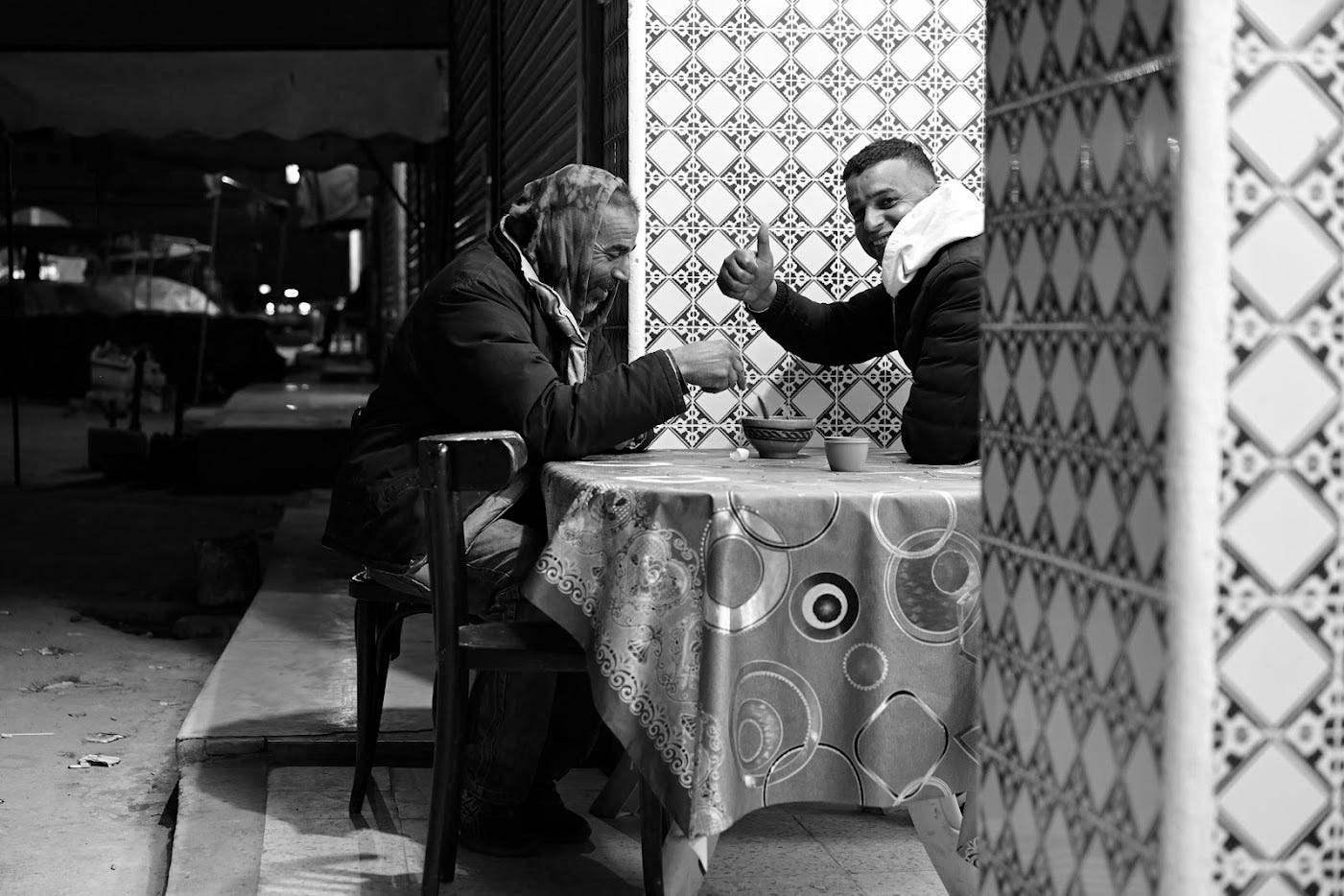
Back at the coastal comfort of our Monastir hotel that night, watching the Mediterranean's dark waters ebb from the balcony, I thought about how differently these two ancient cities had revealed themselves. Sbeitla's temples stood proud in their desert solitude, while Kairouan pulsed with a life that refused to be frozen in time. If this trip had taught me anything, it was to expect the unexpected—and to always save room for dessert (or in this case, a late-night chickpea snack). Tomorrow would bring new adventures along Tunisia's coast, but for now, I was content to let my dreams mix with the sound of the waves, knowing that the best stories are often the ones we never see coming.
Finding home in leblebi and Hollywood daydreams,
Susie
p.s. Here’s looking at you, Kairouan.

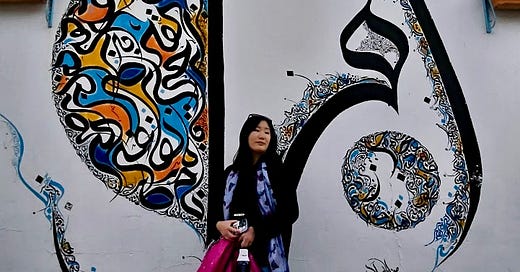


What a glowing account! Their tourism industry should hire you.